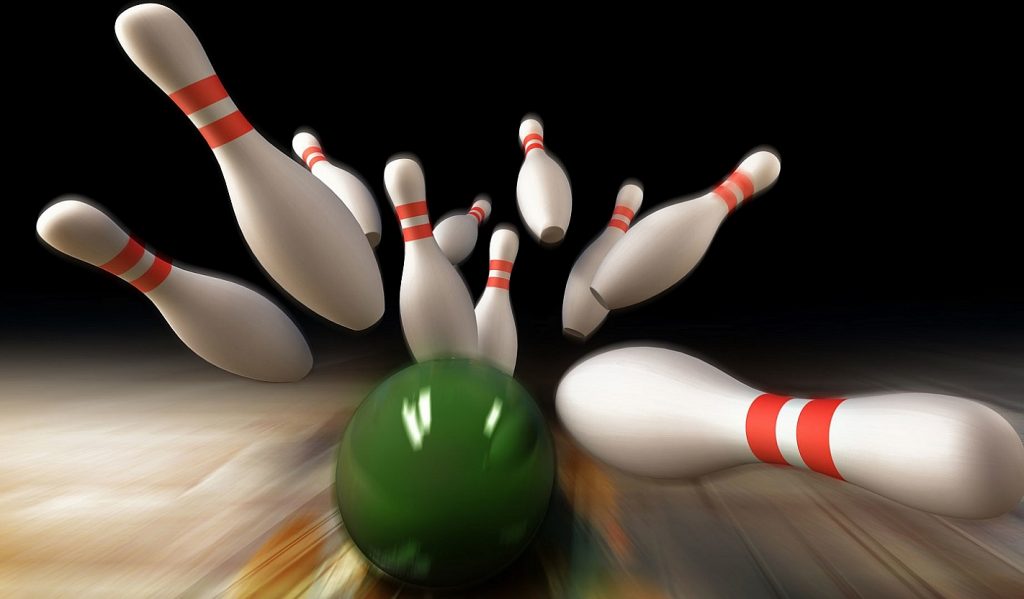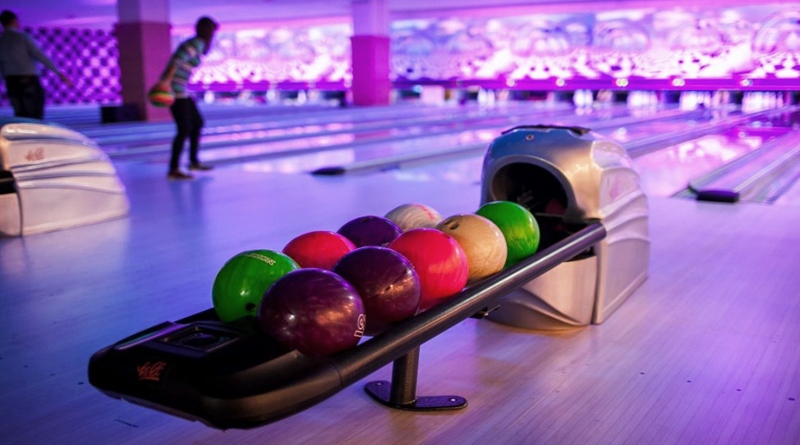Players must:
1. Know the Rules of Conduct in the Play Area and follow them.
2. If you do not know these Rules, read them or ask the Club staff to help you with this.
3. To enter the Play Area only in special shoes.
4. Do not interfere with the rest of the players on adjacent lanes.
5. Place the brought things within the zone of your path.
6. Do not interfere with the Club’s staff to perform their duties, timely report problems in the gaming system and violations of the order.
7. Keep clean. Timely inform the Club staff about the facts of contamination of the Game Zone and the Run-up Zone, do not step on the contaminated areas until they are completely dry after cleaning.
8. Compensate for the damage caused to the bowling alley through their fault, regardless of the degree of informing about the rules of conduct in the Game Zone.
9. Prevent children from going beyond the Foul Line in the Runway. And also do not leave children unattended.
For your safety in the Game Zone it is prohibited:
1. To be without special shoes.
2. Be in the Runway with drinks, food, cigarettes.
3. To be more than one person in the run-up area of one track.
4. Go beyond the foul line in the runway.
5. To throw on the lane with anything other than special bowling balls.
6. Throw in other lanes.
7. Raise the ball over your head. Swing the ball dangerously close to the equipment and allow the balls to come into contact with it.
8. To throw the ball from a level above 40 cm, not keeping the parallel of the throw with the track.
The Club Administration has the right to refuse to continue the game for players who have violated the Rules of Conduct in the Game Zone. Players are obliged to compensate material damage caused to the interior and equipment of the Club. The administration has the right to refuse to visit the Club without explanation.

BOWLING SECRETS: WHAT IS THE BALL MADE OF?
It would seem that it could be easier: roll the ball and knock down the skittles! But no, looking closely, you can learn a lot of cognitive and discover previously unknown facts.
In this article we will look at the most important element of bowling equipment – the ball.
As everyone already knows, the word “bowling” in translation from English “to bowl” means to roll balls. It is not surprising that any bowler thinks about how he will knock out strikes.
The ball is the most important and perhaps the most difficult object in bowling. This is the case when the apparent simplicity is wrong – it is not cast in one piece, as many believe. In fact, a modern bowling ball consists of at least two main parts – the core and the coating. The core of a conventional rolling ball consists of a polyurethane foam filler. The coating is made of plastic, which makes it easy to control such balls on a track of any hardness. Another advantage is that plastic balls are considered optimal for playing on “dry” lanes that are not covered with oil. Plastic balls have been produced since 1959, and bowlers were attracted to them by the variety of colors and relatively low cost. The so-called “houseballs”, provided to visitors for rent in all bowling clubs, have a plastic coating.
In the most complex, professional balls, the core is a composite weight block surrounded by a fill.
Depending on the purpose of the ball (for strikes and throws), the weight block may consist of 2-15 parts of various shapes and sizes; the filling material and, accordingly, its density, elasticity, mass can also vary. It is not surprising that such balls are the most expensive.
Why do we need professional balls, you ask? And they are needed in order to, due to the presence of the core, provide a shift in the center of gravity of the ball relative to its geometric center and increase the rotation of the ball and the potential for arcuate movement (“hook”) from the edge of the track to the “pocket” – the area between the first and third pins (for right-handers ) or the first and second pins (for left-handers). So we have revealed a little secret to you: you should aim the ball not strictly in the center and the first pin, but a little to the right or to the left – this way the probability of hitting a strike increases!
LEARN THE BASIC RULES OF THE GAME
A bowling game consists of 10 frames (“frame”). For each frame, the player is allowed to make two rolls to knock down all 10 pins.
If a player needs 2 balls to knock down all 10 pins in any frame, then the player is awarded a spare. The screen is displayed in this form – “/”. For example, a player can knock down 7 pins on the first throw and 3 on the second.
If a player does not knock down any of the 10 pins on the first throw, but then knocks them all off at once on the second, then he still gets a spare, not a strike, because it took him 2 balls to knock down the pins.
An open frame is obtained when a player does not knock down either pin on both rolls.
HOW TO READ THE SCORING TABLE
The table shows the player’s name and each of the ten frames played, followed by the total score. In each square of the frame (except the last) there are 2 more squares, where they record the number of pins knocked down for each throw of pins.
The last tenth frame is divided into three squares. It records the results of the third roll to be made when the player has a strike or spare in the tenth frame.
OPEN FRAME
When counting an open frame, you simply add the number of pins knocked down after the first throw to the number of pins knocked down after the second. This will be the total point for that frame.
In bowling, points are counted incrementally. The new score is added to the previous one and written into the square of each frame. For example, if in the first frame the player knocks down 3 pins after the first throw and 2 pins after the second, then the number 5 is written in the square of the first frame. If the player knocks down a total of 7 pins in the second frame, then the number 12 is written in the square of the second frame.

HOW TO CALCULATE THE SPA
If a player has a spare, then the number of pins knocked down from the first throw is recorded in the first box, and an oblique line “/” is placed in the second box.
A spare is worth 10 points, plus the number of pins the player knocks down on the next throw. For example, if a player gets a spare in the first frame and then knocks down 7 pins after the first throw during the second frame, then the number 17 is written in the square of the first frame.
HOW TO CALCULATE A STRIKE
If a player hits a strike, then they write “X” in the box for the first throw.
A strike is worth 10 points plus the number of pins knocked down in the next 2 rolls. For example, if a player has a strike on the first frame, and then on the second frame he knocks down 5 pins after the first throw and 4 pins after the second, then in the square of the first frame write the total score of 19.
If a player hits a strike and then strikes again, points are still added according to the results of the following rolls. Thus, if a player gets strikes on all three frames, then the total score for the first frame will be 30.
HOW TO RECORD COMBINATIONS
For beginners, it all looks a bit confusing. Let’s check: if you get a strike on the first frame, a split (7 | /) on the second, and a 9 on the third, what will be the final score?
We hope you hit 48. In the first frame you get 20 (strike plus spare = 10+10), in the second frame you write 39 (20+10+9) and in the third frame you get 48 (39+9).
